BEST Of 2023: Spirituality Edition
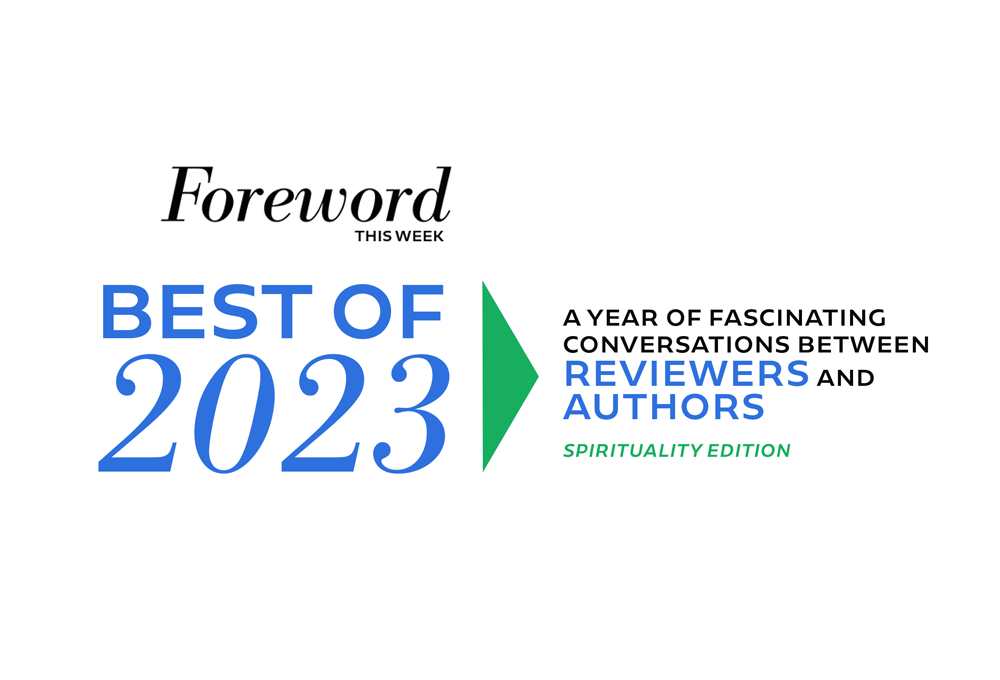
In 2023, we interviewed the authors of several spiritual books that transcend conventional religion and instead stress feminine, Indigenous, nature-based, and self-exploration in their core beliefs. This week we culled the most powerful statements of faith from those extraordinary interviews. So take a couple deep breaths and dig in. These writers will help you understand and experience the universe in new ways.
Reviewer Kristen Rabe Interviews Philip Deloria, Son of Vine Deloria Jr., Author of God Is Red: A Native View of Religion: 50th Anniversary Edition
One of the most fascinating aspects of the book is its discussion of spatial vs. temporal thinking. Native religions are closely tied to place and emphasize a kind of “sacred geography,” while Christianity is based on a timeline of “historical” events. What are the implications of these contrasting sets of beliefs?
The argument locates spiritual traditions in specific places, and it suggests that any tradition will not be effective or meaningful outside of its particular place. In other words, land matters! Christianity began with ties to the biblical holy land, but it has transcended its place through missionary outreach. The book argues that Christianity might be ineffective outside of the holy land. It’s not really cut out for the Americas.
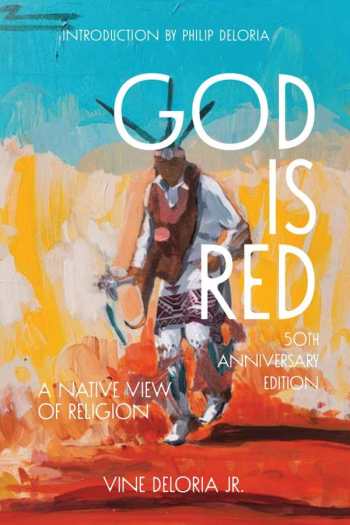
Following this logic, Christianity’s success as a world religion reflects its strategic alliances with several empires in various ages of imperialism, rather than its spiritual efficacy. The argument also suggests that Native spiritualities, as practiced in their home landscapes, have continuing power, even after centuries of hard history in which settlers tried to suppress those practices. That provocative viewpoint sits at the core of the book: it is a critique of Christianity and an assertion of the importance of Indigenous spirituality.
Native origin stories may speak of early times, but they just as often reside in particular landscapes. They are not only invoked; they are experienced. Temporality is not exactly cyclical, as is sometimes claimed, but rather it is full of possibilities. My father was deeply interested in the thought experiments posed by physicists, which he thought might help describe how one could find oneself in multiple temporal experiences. The bottom line is that there is little separation between the human and the divine. Human divinity and power is matched, overlapped, gifted, and connected to the divinity and power of animals, plants, stones, water, and everything else that is here, among us, on this planet.
The lines between life and death are also less rigid, and less likely to be attached to judgments about moral and ethical behavior. Native societies developed other mechanisms to encourage ethical behavior, rather than the threat that one might pay for one’s transgressions in an afterlife. There are plenty of mysteries, ghosts, and uncertainties in Native worlds, but they cannot be oversimplified into overly rigid systems. Native people recognized the uncertain and contingent nature of their own knowledge. Rather than being handed religious dogma, Native people saw the world as something to experience and puzzle out. They used the guidelines of belief and tradition, to be sure, but they also valued the constant reinvigoration of those things through an ongoing experience of revelation.
Reviewer Rebecca Foster Interviews Mordy Levine, Co-author of The Tibetan Book of the Dead for Beginners
Karma is a core idea in The Tibetan Book of the Dead, and therefore in your book, too. How would you define it?
You don’t need to be a Buddhist to believe in karma, also known as the Law of Cause & Effect. How we speak or act at this moment determines our experience in the next moment. How we live today impacts how we live tomorrow, the next day, the next week, month, year—and, when you believe in rebirth, in our future lives.
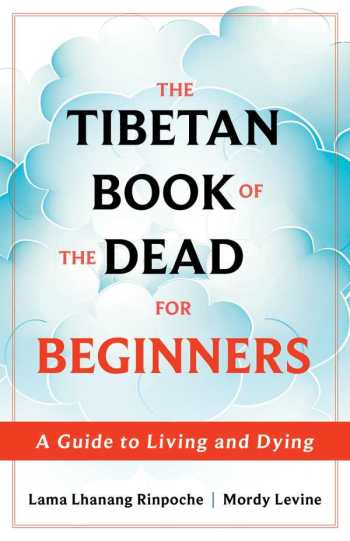
If we love unconditionally, love will come to us. When we close our heart, no one wants to be around us. If you really want to know your karma, look at yourself in the mirror. How we are now results from what we have done in our life until now.
Our karma in the future is determined by what we are thinking, talking, and saying now. Our actions result in consequences. And when we speak of action, we refer to physical action, speech, or thought.
Our intention precedes or triggers our thoughts, speech, or actions. Intention is the basis of karma. Good intention yields good karma, and vice versa. If our intentions are full of friendliness, that will generate good karma. If our mind’s intentions are selfish and full of pride, then that will generate negative karma.
We develop habits of body, speech, and mind that we continue to reinforce—until we break the habit.
Reviewer Kristine Morris Interviews Sophie Strand, Author of The Madonna Secret
Why is it that patriarchy has been able to hold its grip on the world for so long, and why has there been so little revolt against it on the part of women?
I am loathe to place the blame solely on patriarchy when what I see is a bigger systemic issue: a paradigm of separation and domination that gains traction sometime after the Bronze Age Collapse. As demonstrated in the work of Riane Eisler, following the Bronze Age Collapse, we see in the Middle East and Europe a movement away from nature-reverent partnership cultures whose art and religious iconography focused on plants, animals, and festivity—never depicting death or heroic individuals—into an age of hierarchical city-states with heroic figureheads that asserted their power through violence. Women and men alike have revolted against these paradigms time and time again and have been eradicated by a system that is built to do just that: kill and eradicate.
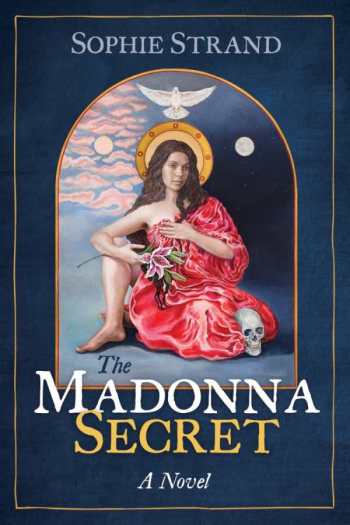
Dionysian priestesses, inspired by a pre-Olympic god of liberatory festivity and anti-imperial mayhem, inspired the two almost successful revolts against the Roman Empire: that of Spartacus and Paculla Annia. We must also call to mind the words of feminist Audre Lorde who advises us, “The master’s tools will never dismantle the master’s house.” Every piece of folklore, herbal wisdom, and midwifery magic that has been passed down orally, pressed from breast to breast, is an antidote to the violence of empire. It is a sideways revolt. Violent revolts against dominator cultures tend to fail and then get written out of the biased historical accounts we receive. But the true revolts do not use the master’s swords or tools or violent outburst. They are stories, secret circles, the tenacious ability of the marginalized to keep their wisdom and narratives alive in boats of breath.
Reviewer Kristine Morris Interviews Lori Erickson, Author of Every Step is Home: A Spiritual Journey from Appalachia to Alaska
How does your experience of the holy in a great European cathedral compare with what you felt at the small chapel of Chimayó in New Mexico or Indigenous holy sites in the US? What is it that makes a place “sacred?” And how do we distinguish between an encounter with the “holy” from the appreciation of natural or human-made beauty?
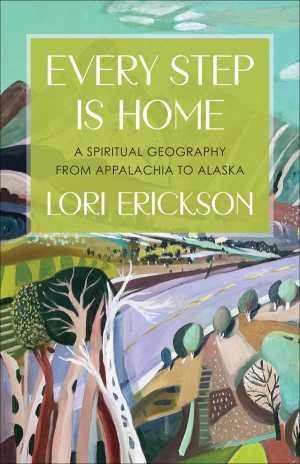
I love holy sites in all their many varieties, from grand cathedrals to small chapels, from the Grand Canyon to a sacred spring. That said, the moods in each can be very different. When you’re feeling vulnerable and grieving, for example, one place may speak to you and another will not. That’s why we need many types of holy places.
As for what makes a place sacred, I think one of the best descriptions is from Celtic lore: there are places where the veil between worlds is thin. We naturally gravitate to these “thin places” when we’re on a spiritual quest.
I don’t make a big distinction between a holy site and an appreciation for beauty. They’re so intertwined that the distinction doesn’t make much sense to me. A work of art can be as awe- inspiring as a cathedral or an incredible vista in nature. The spirit flows through many vessels.
Reviewer Rachel Jagareski Interviews Florian Schäfer and Janin Pisarek, Authors of Hausgeister!: A Comprehensive Guide to the Household Spirits of German Folklore
Why do you think there has been resurgent interest in fantastic and mythical creatures in contemporary literature, films, games, and other types of popular culture?
Janin: Interest in the supernatural and the fantastical is likely to endure indefinitely, perhaps even intensifying with the progression of modernity, much like during the Romantic era. This affinity for the mythical offers a means of escape and a slowdown from the rapid pace of daily life. Amidst feelings of disorientation and rootlessness, supernatural entities in literature, films, games, and other facets of popular culture provide a constant presence. These characters, motifs, and narratives have captivated and intrigued people for millennia, shaping our cultural memory. Although they have faded from many corners of society, they remain a substantial part of our world.
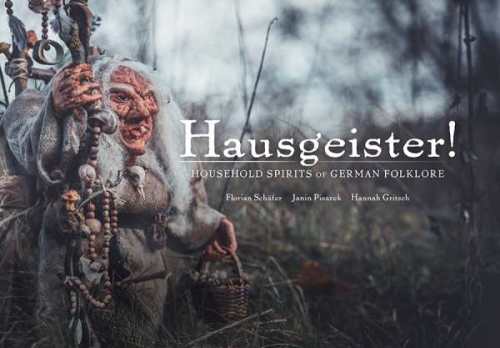
Legendary figures have always held significance; they act as a mirror reflecting human behavior, highlighting misconduct, and thereby serving as regulators. They facilitate the portrayal of genuine problems, solutions, and perils through metaphor, rendering complex societal matters more comprehensible. Moreover, the allure of the unfamiliar has historically been potent and appealing—recall the myriad renowned travel accounts that satiated people’s appetite for sensation with depictions of absurd dog-headed beings or perilous man-eaters, centuries before.
Reviewer Michelle Anne Schingler Interviews Nikki Marmery, Author of Lilith
You take Lilith out of a strictly Jewish context; in your book, she interacts with Mary Magdalene and women of earth-based spiritual practices, too. Why was it important for you to widen her story this way?
Lilith, the first woman, the equal woman, represents for me a historical reality. She is Woman as she was before the dawn of patriarchy: equal, powerful, and divine. I wanted to explore the loss of female equality—inextricably connected to the demise of female divinity—in the Western world. I was interested in the specific ways in which the stories of the Bible justified and enforced male supremacy for two and a half thousand years (ever since the Book of Genesis was finalised in its current form). I wanted to write about something that is so ingrained in our culture that we rarely question it: why do we have a divine Father but no Mother?
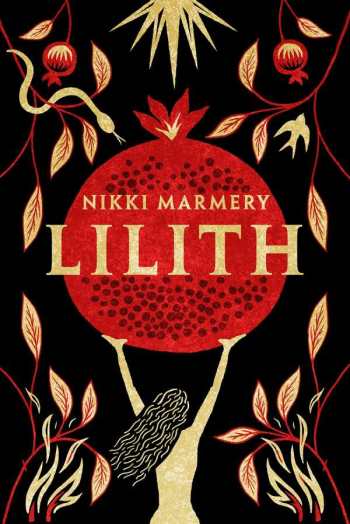
So this story starts in the Jewish world—but it is not solely a Jewish story. Patriarchy emerged in every culture of Western Asia and the Eastern Mediterranean, starting around 4000 BCE, and wherever it reared its head, mother goddesses were demoted and erased, as women lost status and power.
Lilith’s quest in my book is to restore this lost power. It was crucial to me that this encompassed Christianity because it was overwhelmingly the Christian world that leveraged the biblical creation myth to limit women’s freedom, their voice, their very humanity. This is evident from the earliest Christian leaders, such as Paul the Apostle, who said: “I do not permit a woman to teach or to have authority over a man; she is to keep silent. For Adam was formed first, then Eve; and Adam was not deceived, but the woman was deceived and became a transgressor.” (1 Timothy 2, 10-11)
This view was reinforced by the Church time and time again and fuelled the wildest extremes of medieval misogyny. By the 15th century CE, Eve’s “sin” and supposed susceptibility to temptation became used to explain why women were more likely to be witches—a significant factor in the persecution and execution of countless women across Europe (and its colonies) for the next 300 years.
“For it is true that in the Old Testament the Scriptures have much that is evil to say about women, and this is because of the first temptress, Eve … And it should be noted that there was a defect in the formation of the first woman, since she was formed from a bent rib, that is, a rib of the breast, which is bent as it were in a contrary direction to a man. And since through this defect she is an imperfect animal, she always deceives.” Malleus Maleficarum, Hammer of Witches, 1487
It was Christian European powers that colonised more than 80 percent of the world and brought their particular reading of Genesis to bear on other cultures. Wherever they encountered indigenous religious practices in which women had power and authority they were denounced as heretical or Satanic and were ruthlessly crushed.
So that is the primary reason that this story jumps out of a Jewish context. But the secondary reason is that Lilith herself is cross-cultural. She is perhaps the oldest continuous female archetype in world myth, starting life in Ancient Sumer (modern-day Iraq) more than four thousand years ago. Here, the lilitu were a species of night demon, the ghosts of dead virgins who preyed on sleeping men. She appears in one of the oldest texts in human history, Inanna and the Huluppu Tree, dating from at least 2000 BCE, in which the “dark maid Lilith” has set up home in Inanna’s holy tree. Over time, she merged with the goddess Lamashtu, who, like the later Hebrew Lilith, was evicted from Heaven by the Father God Anu, for malevolence and disobedience, and terrorised pregnant women and children. By the first millennium BCE, Lilith had spread to the Hebrew world, appearing as a demon in the 8th century BCE Book of Isaiah, and to the Greek world as Lamia, where she was established by the time Aristophanes and Crates wrote about her from the 5th century BCE.
In the 5th–8th centuries CE in what is now Iraq, people of Jewish, Christian, Zoroastrian, and Gnostic faiths warded Lilith away in incantation bowls buried beneath their houses—bowls written in different languages have been found in neighbouring houses, reflecting the close proximity of different cultures who believed in Lilith.
The first written reference to Lilith as Adam’s first wife is in the satirical Hebrew text The Alphabet of Ben Sira (c700–1000 CE), which undoubtedly refers to an existing oral tradition, perhaps developed from the Babylonian Talmud (completed around 500 CE) in which Adam fathers demons with an un-named demoness during his separation from Eve. This was also current in the Christian world: in the 5th–6th century CE Eritrean work The Book of Adam and Eve, a beautiful demon calling herself Eve’s sister attempts to seduce Adam, saying that God had promised her in marriage to him.
Mythology rarely exists monoculturally—especially in the ancient Levant and Mesopotamia, where different peoples lived side by side, interacted and traded with each other. Myths evolved as they travelled from one culture to another. I wanted to reflect this broad cross-cultural exchange, which not only influenced the myth of Lilith, but many of the other biblical stories I revisit in my book, too.
Reviewer Michelle Anne Schingler Interviews Anbara Salam, Author of Hazardous Spirits
Do you see any parallels between spiritualism’s pull then and any contemporary movements—either New Age or elsewhere? And, if so: what’s the perennial element of the draw toward this kind of magical thinking?

Spiritualism is still a movement with active practitioners and churches, however, at the peak of its popularity it offered promises of supernatural intervention at a time when more traditional religious beliefs struggled to offer meaningful solace for those reeling from the global scale of death and suffering. Although Hazardous Spirits is set almost exactly 100 years before its publication date, we are still living in a moment characterized by interest in the mystical: tarot card readings, crystal healing, popular astrology, essential oils, “manifestation,” meditation apps. All of these esoteric or esoteric-adjacent rituals are quite inward-looking practices that sit well with our contemporary mandate to nurture and focus on the self.
Perhaps this is a reaction to an out-of-control climate and economy, or perhaps it’s a happy confluence of consumer capitalism and a desire for enchantment. The perennial appeal of magical thinking is likely how little sacrifice it demands from its devotees, with seemingly cosmic rewards. It’s like a form of spiritual snacking for those who want to feel guided without the requirements of commitment or community.
Reviewer Kristine Morris Interviews Kelly Bulkeley, Author of The Spirituality of Dreaming: Unlocking the Wisdom of Our Sleeping Selves
Like any spiritual practice, that of cultivating and interpreting dreams requires discipline, and your book suggests ways to become a “big dreamer.” Please share what you’ve found most helpful, and why the practice demands humility.
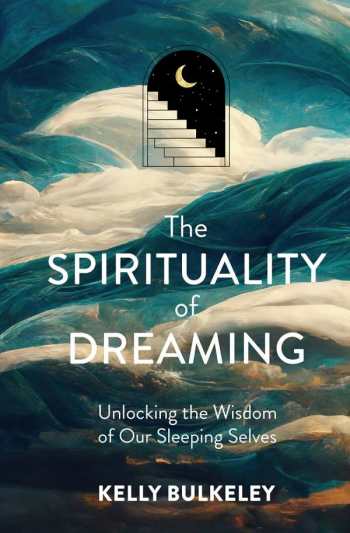
Here’s the analogy I like: if you go into a forest hoping to see interesting wildlife, you need to be quiet, patient, and willing to receive whatever the forest gives you. If you’re too noisy and make too many big moves, it’s unlikely any creatures will appear and interact with you. (My first book was titled The Wilderness of Dreams.) To enhance your powers as a dreamer, you need to get out of your own way. You need to suspend ego expectations and critical judgment, and simply open yourself to whatever your dreaming imagination brings you. The great paradox of spiritual dreaming is that you receive the greatest gifts when you let go of your conscious intentions and adopt an attitude of humility and openness to whatever comes.
How do you incorporate dreaming into your personal spiritual practice, and how it has made a difference in your life?
I keep a regular dream journal and I share my dreams regularly with friends and colleagues. For me and many others, these activities amount to a contemplative practice. Whatever I may learn from a particular dream, it’s the practice of consistently engaging with my dreaming imagination that feels spiritually nourishing. In this sense, reflecting on dreams is like mental yoga: it helps keep you flexible, toned, and ready for the challenges of waking life. I’m hardly a perfect person, but thanks to close reflection on my dreams, I do feel well-grounded and confident in who I am and what I’m called to do in this life.
Matt Sutherland
